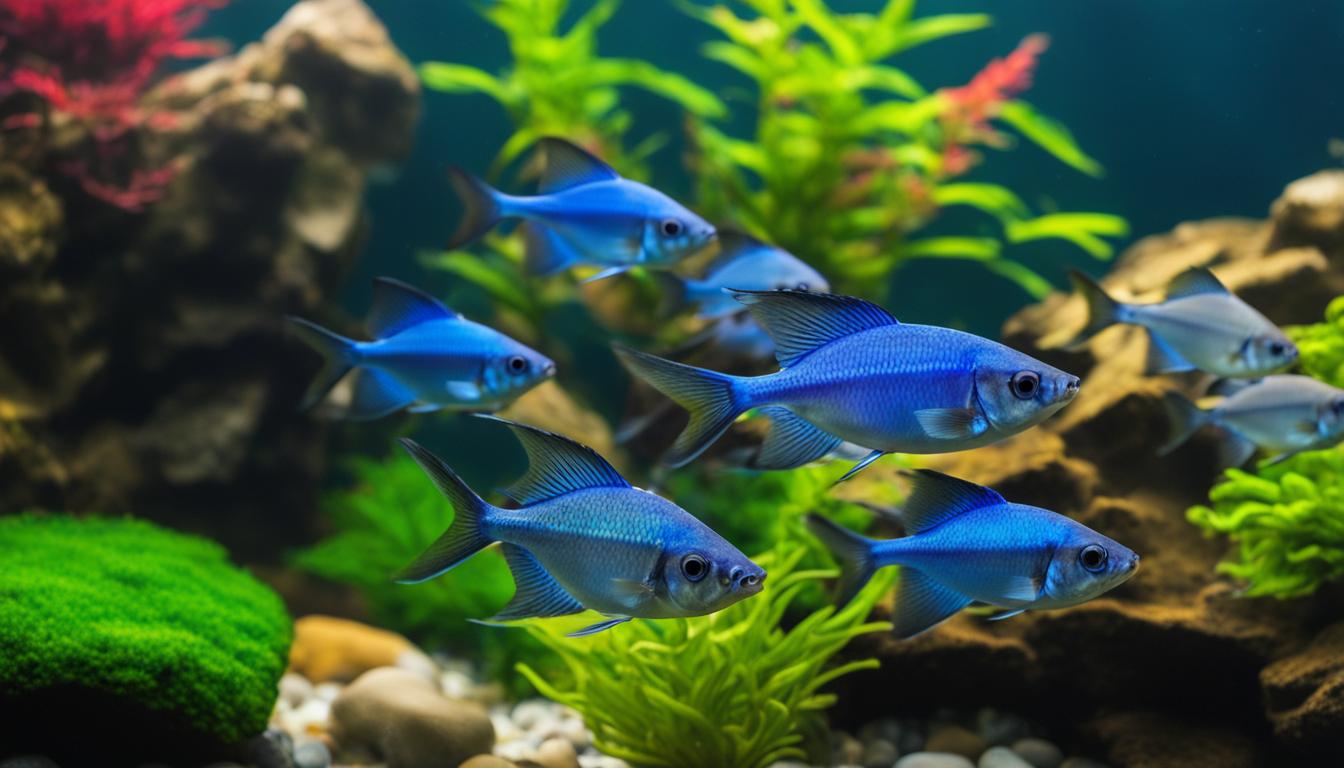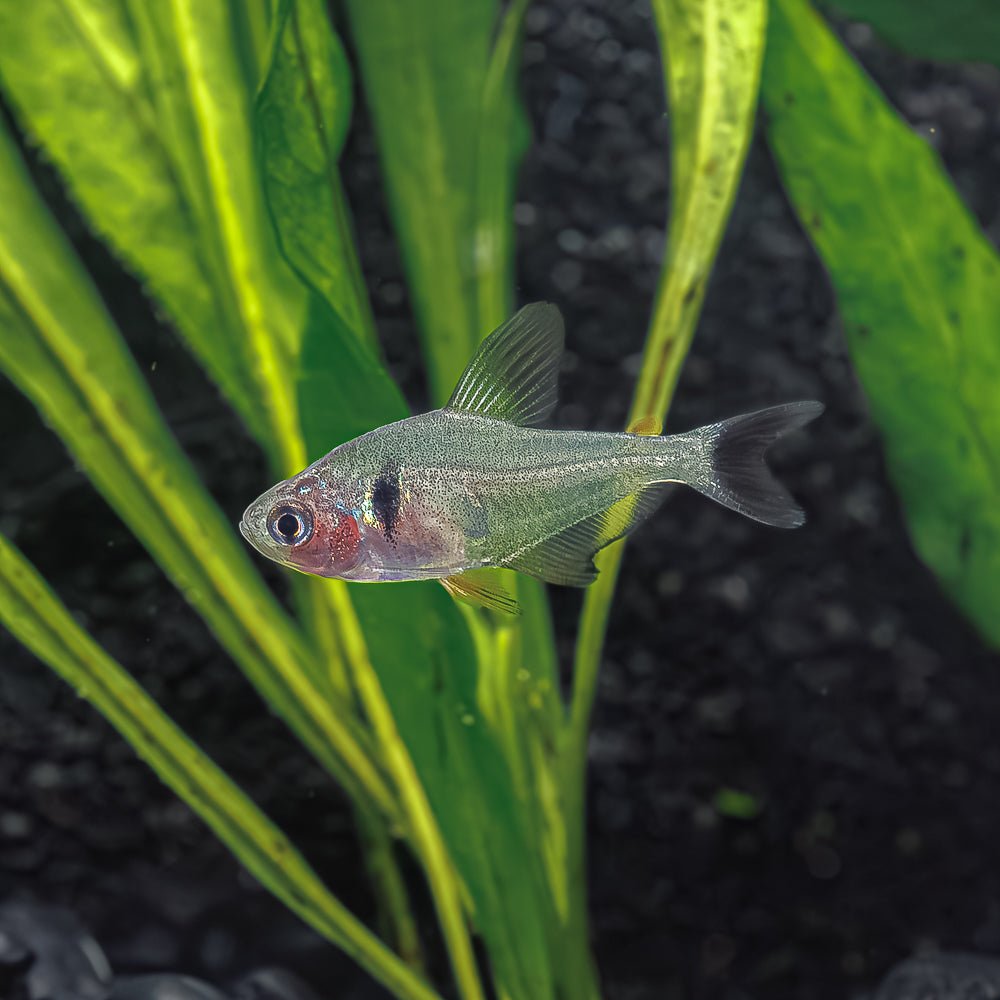Black Phantom Tetras can suffer from common fish diseases like Ich and Fin Rot. Poor water quality often causes these health problems.
Black Phantom Tetras are popular freshwater fish known for their striking appearance and peaceful nature. They thrive in well-maintained aquariums, making them a favorite among both novice and experienced aquarists. Despite their hardy nature, they are susceptible to health issues if their environment is not properly maintained.
Regular water changes, a balanced diet, and close monitoring can help prevent common diseases. It’s essential to recognize early symptoms to provide prompt treatment. Understanding their specific needs ensures a healthy, vibrant aquarium, allowing these beautiful fish to flourish. Proper care and attention are vital to maintaining their health and longevity.
Common Health Issues
Black Phantom Tetras are beautiful fish but can face health issues. Knowing these issues helps in keeping them healthy and happy.
Ichthyophthirius (ich)
Ichthyophthirius, also known as Ich, is a common problem. It is caused by a parasite. The fish shows white spots on its body and fins. The fish may rub against objects to relieve itching. The fish may also breathe fast and lose appetite.
To treat Ich, raise the tank temperature slowly. Add aquarium salt. Use a commercial Ich treatment. Always quarantine new fish to avoid spreading the disease.
Fin Rot
Fin Rot is another common issue. It is caused by bacteria or fungi. The fins of the fish appear ragged and may rot away. The edges of the fins may look white or red. This can lead to secondary infections.
To treat Fin Rot, keep the tank clean. Change the water regularly. Use a commercial antibacterial or antifungal treatment. Make sure the fish are not stressed.
| Health Issue | Symptoms | Treatment |
|---|---|---|
| Ichthyophthirius (Ich) | White spots, itching, fast breathing | Raise temperature, add salt, use Ich treatment |
| Fin Rot | Ragged fins, white/red edges | Clean tank, change water, use antibacterial/antifungal treatment |
- Always quarantine new fish before adding them to the tank.
- Keep tank conditions stable to prevent stress.
- Monitor fish daily for signs of illness.

Credit: flipaquatics.com
Symptoms To Watch For
The Black Phantom Tetra is a popular freshwater fish. Ensuring their health is crucial. Monitoring for specific symptoms helps in early detection of issues. This section highlights the key symptoms to watch for.
Behavioral Changes
Behavioral changes in Black Phantom Tetras can indicate health problems. Look for these signs:
- Loss of Appetite: Reduced interest in food is a red flag.
- Lethargy: Inactive or sluggish behavior is abnormal.
- Erratic Swimming: Darting or swimming in circles shows stress or illness.
- Isolation: Staying away from the group can indicate an issue.
Physical Signs
Physical signs are visible indicators of health problems. Keep an eye out for these symptoms:
- Discoloration: Faded or unusual colors can signal disease.
- White Spots: Presence of white spots suggests ich infection.
- Clamped Fins: Fins held close to the body indicate stress.
- Swollen Belly: Bloating or swelling can point to internal issues.
- Frayed Fins: Torn or ragged fins indicate fin rot or injury.
Preventive Measures
Preventing health problems in Black Phantom Tetras is crucial for their well-being. Ensuring a healthy environment helps these vibrant fish thrive. Let’s explore some key preventive measures.
Water Quality
Maintaining optimal water quality is essential for Black Phantom Tetras. Regular water testing is crucial. Here’s a table summarizing ideal water parameters:
| Parameter | Ideal Range |
|---|---|
| Temperature | 72-82°F (22-28°C) |
| pH | 6.0-7.5 |
| Ammonia | 0 ppm |
| Nitrite | 0 ppm |
| Nitrate | < 20 ppm |
Regular water changes are vital. Change 25% of the water weekly. This helps in removing toxins and waste.
Tank Hygiene
Good tank hygiene prevents diseases in Black Phantom Tetras. Clean the tank regularly. Remove uneaten food and debris.
Here are some tips for maintaining tank hygiene:
- Use a gravel vacuum to clean the substrate.
- Wipe algae off the tank walls.
- Clean the filter monthly to ensure efficient operation.
- Quarantine new fish before adding them to the tank.
Keeping the tank clean reduces the risk of infections. It also keeps the fish stress-free.
By following these preventive measures, you can ensure the health of your Black Phantom Tetras. Proper care makes them more vibrant and active.
Diet And Nutrition
Diet and nutrition play a vital role in the health of your Black Phantom Tetra. A balanced diet helps prevent diseases and promotes overall well-being. Understanding their dietary needs is crucial for maintaining their health.
Balanced Diet
A balanced diet is essential for Black Phantom Tetras. They need a mix of protein, vitamins, and minerals. Provide a variety of foods to ensure they get all necessary nutrients.
| Food Type | Examples |
|---|---|
| Protein | Brine shrimp, bloodworms, daphnia |
| Vitamins | Flake food, algae wafers |
| Minerals | Vegetable matter, spirulina |
Feed them small amounts twice a day. Overfeeding can lead to health issues like bloating.
Supplements
Sometimes, a regular diet may not be enough. Supplements can help fill nutritional gaps. Consider adding the following:
- Vitamin C supplements to boost their immune system.
- Calcium supplements for strong bones and teeth.
- Probiotics to improve digestion and overall gut health.
Always consult a vet before adding any supplements. This ensures the safety and well-being of your Black Phantom Tetra.
Quarantine Practices
Quarantining your Black Phantom Tetra is vital for their health. It helps prevent diseases and keeps your main tank safe. Follow these practices to ensure a healthy environment for your fish.
New Fish Introduction
Introducing new fish to your tank can be risky. Always quarantine new arrivals for at least two weeks. This helps detect any diseases they might carry. Place them in a separate tank with similar water conditions.
Monitor their behavior and appearance daily. Look out for unusual spots or changes in swimming patterns. Use a dedicated net and equipment to avoid cross-contamination.
Isolation Procedures
Isolating sick fish is crucial to prevent spreading diseases. Set up a hospital tank with clean water and proper filtration. Ensure the tank’s temperature matches the main tank.
Regularly check your fish for signs of illness. Common signs include clamped fins, lethargy, and loss of appetite. Treat the isolated fish with appropriate medications. Follow dosage instructions carefully.
Keep a close eye on the isolated fish. Once they show signs of improvement, you can gradually reintroduce them to the main tank.

Credit: fishkeepingmadesimple.com
Treatment Options
Black Phantom Tetras are beautiful fish. They are also delicate. They can face health problems. To help them recover, you need to know the right treatment options.
Medication
Medication can be very effective for treating fish diseases. Commonly used medications include:
- Antibiotics: Fight bacterial infections.
- Antifungals: Treat fungal infections.
- Parasiticides: Eliminate parasites.
Always follow dosage instructions carefully. Overdosing can harm your fish. You can find these medications at pet stores or online. Consult a vet for serious infections.
Natural Remedies
Natural remedies can also help treat health problems in Black Phantom Tetras. These remedies include:
- Salt Baths: Use aquarium salt. It helps with mild infections and stress.
- Garlic: Boosts immunity. You can add garlic juice to their food.
- Aloe Vera: Heals wounds. Add aloe vera extract to the water.
Natural remedies are usually safer. They have fewer side effects. But, they might not be as effective for serious issues.
Stress Reduction
Keeping your Black Phantom Tetra stress-free ensures they remain healthy and vibrant. Stress can lead to various health problems, so it’s essential to create a calm environment.
Proper Tank Mates
Choosing the right tank mates is crucial for reducing stress. Black Phantom Tetras are peaceful fish and thrive with similar species.
- Neon Tetras
- Cardinal Tetras
- Harlequin Rasboras
Avoid aggressive species like Cichlids or Barbs, which can cause stress. Keep them in groups of at least six to encourage natural schooling behavior.
Optimal Environment
Creating an optimal environment helps in stress reduction. Ensure the tank size is at least 20 gallons.
Maintain a water temperature between 72-82°F. Use a heater if needed. Keep the pH level between 6.0-7.5.
| Parameter | Ideal Range |
|---|---|
| Temperature | 72-82°F |
| pH Level | 6.0-7.5 |
Include plenty of plants and hiding spots. Use soft lighting to mimic their natural habitat.
Perform regular water changes. Monitor the water quality to keep stress levels low.
Regular Health Checks
Keeping your Black Phantom Tetra healthy requires regular health checks. Early detection of issues ensures a longer, happier life for your fish.
Routine Inspections
Routine inspections are crucial. Look for signs of stress, disease, and unusual behavior. Check if the fins are clamped or frayed. Observe the fish’s swimming patterns. Healthy Tetras swim actively.
- Inspect fins and scales for damage.
- Observe for signs of bloating or weight loss.
- Check for abnormal swimming patterns.
Professional Advice
Seek professional advice if unsure about your fish’s health. Consult a vet experienced with fish. They can provide accurate diagnoses and treatments.
| Signs of Health Issues | Recommended Action |
|---|---|
| White spots on body | Consult vet for Ich treatment |
| Labored breathing | Check water quality, consult vet |
| Loss of appetite | Observe, consult vet if persists |

Credit: fishkeepingmadesimple.com
Frequently Asked Questions
How Long Do Black Phantom Tetras Live?
Black phantom tetras typically live for 5 to 6 years with proper care. Maintain optimal water conditions to ensure longevity.
Are Black Phantom Tetras Fin Nippers?
Black phantom tetras are not typically aggressive fin nippers, making them suitable for community aquariums.
Are Black Phantom Tetras Aggressive?
Black phantom tetras are generally peaceful. They may show mild aggression during breeding but are suitable for community tanks.
How Many Phantom Tetras Should Be Kept Together?
Keep at least six phantom tetras together. They thrive in groups and display better behavior.
Conclusion
Caring for Black Phantom Tetras can be challenging but rewarding. Regular water changes and proper diet are essential. Monitor for common health issues like ich and fin rot. Quick action ensures a healthy, thriving aquarium. By staying informed, you can enjoy vibrant and active Black Phantom Tetras in your tank.
